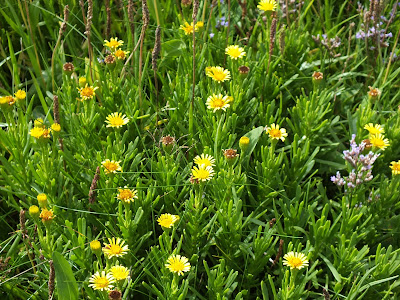A taste of autumn....
The past few days have seen a real good mix of weather, culminating in a day and night of gales with wind speeds at Pembrey of 63mph, and yes its still August.
The Carmarthenshire Bird Club event on Thursday saw 21 members enjoy a mixed bag of waders and gulls but only low numbers of terns, Sandwich Terns being the only species seen
Amongst the waders the surprise was 6 or 8 Bar-tailed Godwits, also present were over 4000 Oystercatchers, 84 Ringed Plover, a handful of Dunlin and Knot. A Common Sandpiper was new for the reserve 2016 bird list.
Gulls were present in good numbers with Black-headed the most abundant, Herring, Lesser and Greater Black-backed, Common and Mediterranean all in reasonable numbers, A couple of Gannets offshore, and a Fulmar which came in very close off the estuary completed the seabirds.
 |
| Black-headed Gull |
Land birds included 2 Northern Wheatear, Linnets, Stonechat, Rock Pipits and Pied Wagtails, and an adult and juvenile Peregrine.
 |
| Stonechat ♂ |
On Friday I was joined by eight people for another look at the high tide, a similar range of birds were seen, but Black-tailed Godwit was new however the highlight was undoubtedly a Kittiwake first found by Veronica.
Saturday saw a good friend, Nick, come and stayed for the weekend and despite the less than seasonal weather we ventured out and were treated to a Spoonbill fly in to the main creek in the marsh. This brought the reserve 2016 bird list to a credible 110 species.
After a break for food we went back out around 18:00hrs and found little different on the tide, however a large dark Skua species was found mid channel but in the conditions a firm identity was difficult.
Sunday saw better conditions and a visit to Pembrey Old Harbour turned up a couple more Northern Wheatear, and best of all the Spoonbill was seen flying into the pond/marsh of Field 2
 |
| Eurasian Spoonbill (this is one of my personal library photos) |























